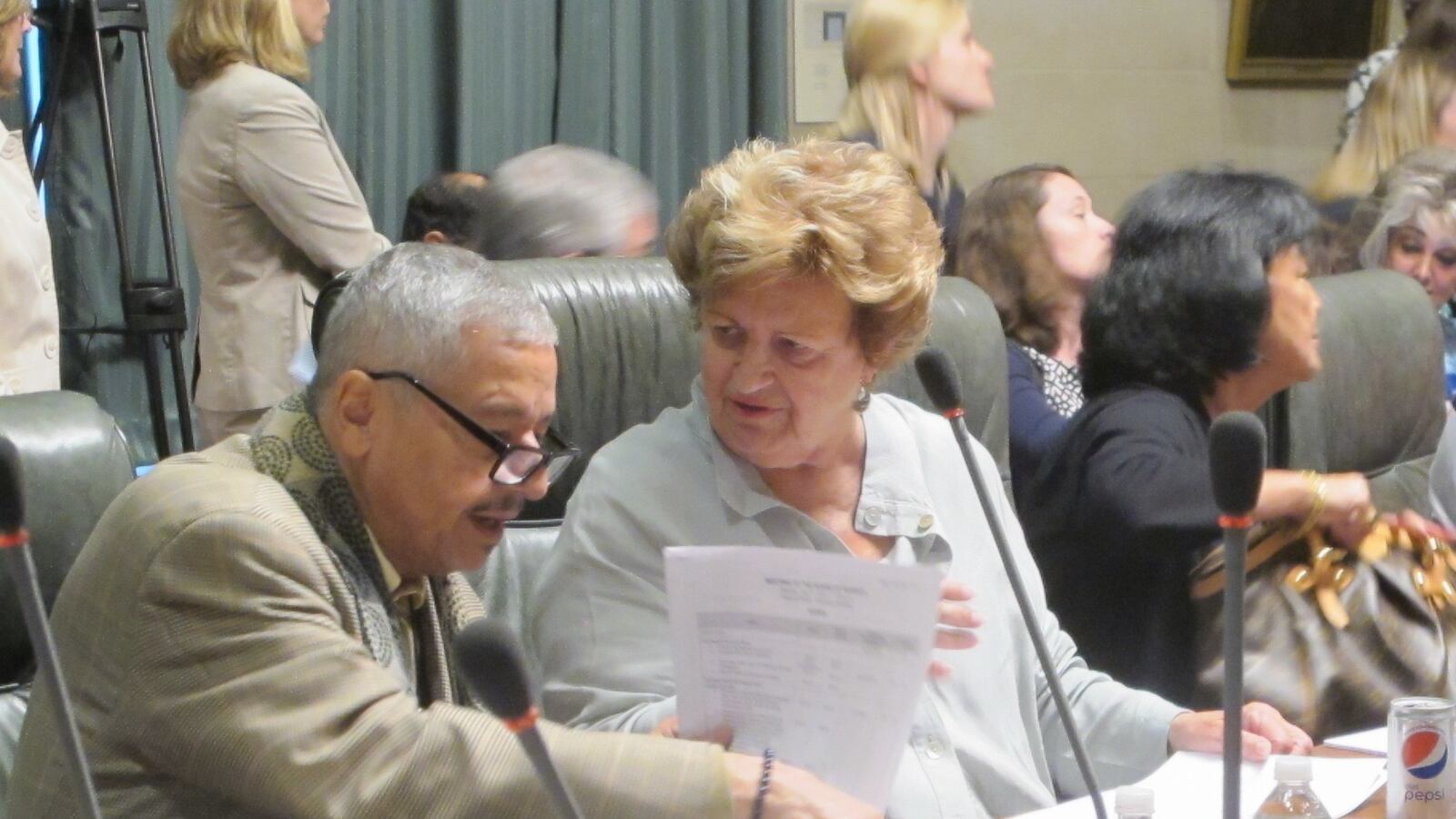What makes a school highly effective?
Is it how high students score on exams, or whether they’re able to take advanced classes at all? Is it about how schools feel to the students and teachers in them every day, or what happens to students after they leave? These questions have long vexed educators — and fueled criticism of school accountability systems’ narrow focus on math and reading scores.
According to officials tasked with overhauling New York’s approach to evaluating schools, the answer could soon be all of the above.
On Monday, the State Education Department released a draft list of 20 guiding principles for their new evaluation of schools under the new federal education law, known as the Every Student Succeeds Act. The law gives states more latitude to define school success and choose how they hold schools accountable for missing the bar.
What’s clear is that New York is headed toward an accountability system that shifts its focus far beyond math and English test scores. Here are a few of the principles that policy makers are following and the questions they raise. (The whole list — a draft on which the state is soliciting public comment — is here.)
Idea #1: Schools should be judged in part by what students do after they leave.
This was by far the most controversial measure when state officials took their first draft of an accountability framework to educators, local leaders, and a sprawling “think tank” over the last few months, the officials said. That’s because assessing schools by how well their graduates do in college, work, or the military is both perfectly logical and nearly impossible.
If the goal of schools is to prepare students for life after high school, it makes sense to track where they end up and how they do, according to one line of thinking. But critics argue that sets an unfair standard for schools that is largely outside of their control. Why should they be judged for what happens after students leave? This is particularly relevant as many students today struggle to finish college and often end up saddled with debt.
“There was a significant minority who did not believe that our accountability system should include metrics that happen after students leave high school,” said Ira Schwartz, assistant commissioner.
Idea #2: The state should give schools reasons to offer advanced and specialized courses in all subjects, including the arts, career and technical education, and foreign languages.
In some ways, this concept is bold because it suggests schools should incentivized not just to help students perform better in classes, but also to offer more classes in the first place. Critics could see in it a return to a previous era, when schools were measured by inputs such as how much money they spent on each student. The last 15 years of education policy making attempted to shift that orientation, so that outcomes mattered most.
More practically, executing on this principle could be a challenge. Typically, low-income students and students of color suffer the most from a lack of exposure to those courses. The average white or Asian student in New York City is in a school with more than twice as many AP courses then the average black or Hispanic students, according to a 2013 report from the city’s Independent Budget Office.
Idea #3: The state’s accountability system will include non-academic measures like school climate, safety, and how well students with disabilities are included.
All states are required to add non-academic measures to how they rate schools, and many are already starting to experiment with new ideas.
In Indiana, for example, lawmakers are considering 34 ways to satisfy the requirement. State officials offered no word on which measures New York State could use or how much they would count, but non-academic measures must be weighted less than academic success, according to federal guidelines.
Idea #4: The state’s accountability system will rely on state tests that are “valid, reliable, and developmentally, culturally and linguistically appropriate.”
Though it seems fairly straightforward, this point could actually represent a big shift. No Child Left Behind started with the concept that, with very few exceptions, all students should pass the same test. Period. This idea tweaks the logic, arguing that tests should accommodate the needs of students. It’s an argument that many have made during New York’s transition to the Common Core standards and the resulting opt-out movement.
Idea #5: New York’s schools will give students multiple ways to graduate — so long as they are ready for post-secondary education, careers, and “positive civic engagement.”
Other than signaling again that the board is serious about finding more ways to help students graduate, this introduces that idea that students should be prepared for “positive civic engagement” after high school. That suggests schools should not only be tasked with helping students find succeed in college or jobs, they should also be creating good citizens. It’s not clear how that would be measured, but it’s reasonable to assume that measuring something as complex and intangible as civic engagement could be a big challenge.
Idea #6: Money matters: The Regents will continue to push for equitable funding as part of their revamp of the state’s accountability system.
Advocating for resources got a big thumbs up from stakeholders, according to state officials. And it’s tricky to add more courses without more funding. But it’s easier to ask for money than to actually find it. After the meeting Monday, Rosa said the state is exploring partnerships with groups like Partnership for New York City and also thinking about how they can maximize the current resources they have, she said.
“We are reaching out to other partners to figure out how do we do this,” she said.

